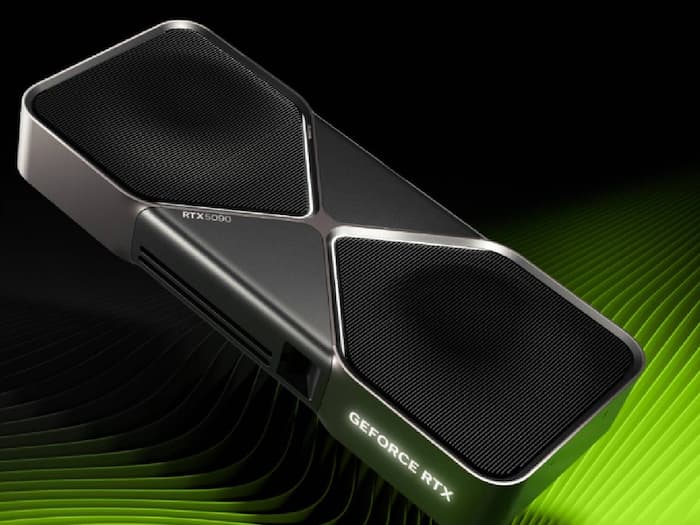
Written By Deepti Ratnam
Edited By: Deepti Ratnam | Published By: Deepti Ratnam | Published: Jan 07, 2025, 09:47 AM (IST)

Nvidia rtx 5090: The biggest tech event CES 2025 is offering some of the biggest and greatest innovations in AI, OLED Displays, the world’s first rollable laptop, and the latest GeForce RTX 50 Series graphics cards and laptops. Nvidia has finally unveiled its much-anticipated Graphics cards series dubbed RTX 50-series GPUs during a CES keynote. The GPUs include RTX 5090, RTX 5080, RTX 5070 Ti, and RTX 5070. This is the first time when Nvidia has released a titanium edition card. Additionally, they are the most expensive cards the company has ever produced.
The RTX 4090 starts at $1,999 for the flagship 5090, $999 for the 5080, $799 for the 5070 Ti, and 5070 for $549.
NVIDIA’s RTX 50-series comes with staggering features including 4,000 TOPS, 380 RT TFLOPS, and 125 Shader TFLOPS, powered by an incredible 92 billion transistors. The GeForce RTX 5090 GPU features 92 billion transistors, providing over 3,352 trillion AI operations per second (TOPS) of computing power. The company has embedded Blackwell architecture and DLSS 4 in RTX 5090 GPU which the company claims outperforms GeForce RTX 4090 GPU by up to 2x.
The Blackwell architecture of NVIDIA Max-Q technology extends the battery life by up to 40% which includes thin and light laptops, maintaining their sleek design without renouncing power and performance. The RTX 50-series features G7 memory and delivers 1.8TB/s of memory bandwidth.
Jensen Huang, founder and CEO of NVIDIA. Said, Blackwell, the engine of AI, has arrived for PC gamers, developers, and creatives”
The newly launched NVIDIA’s RTX 50-series features ninth-generation NVIDIA encoders for video editing and livestreaming. In addition, they are equipped with NVIDIA DLSS 4 and up to 32GB of VRAM which can tackle massive 3D projects.
The recent GPU series also features several software updates, including NVIDIA Broadcast effects, updates to RTX Video & RTX Remix, and NVIDIA NIM microservices. Other features include FP16 and the FLUX.1 [dev] model which can help in generating images in 15 seconds with 30 steps.